Vimar Breakers
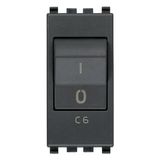
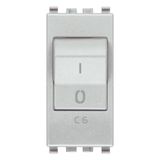
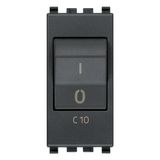
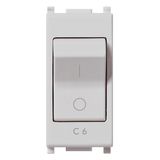
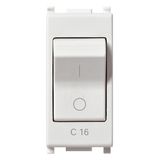

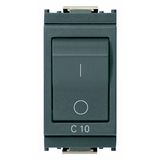
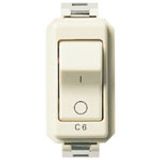
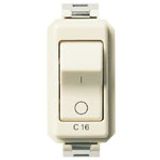
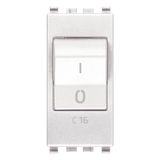
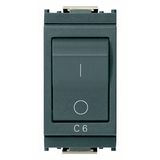

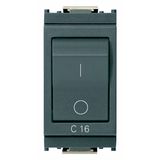
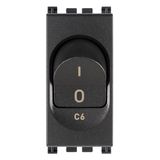
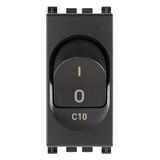
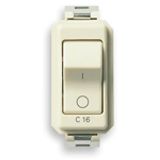

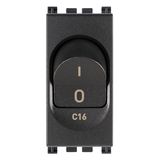




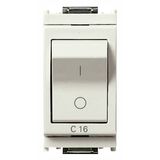

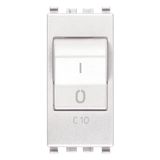



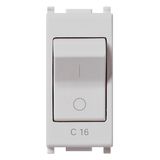


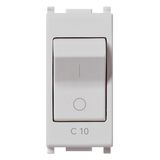

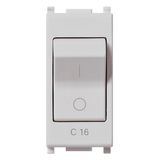

vimar breakers assortment and application map
Lineup coverage includes 1P/1P+N/2P/3P/3P+N to 125 A, thermal-magnetic trip curves B/C/D, add-on auxiliaries (OF/SD), shunt and undervoltage releases, comb busbars (1P–3P), and padlockable toggles. Panel builders use vimar breakers on floor DBs, risers, and small MCCs where 18-mm pitch keeps widths tight and selectivity with upstream MCCBs is documented.
vimar circuit breakers ratings, curves, and Icn windows
Branch devices are available at 6 kA and 10 kA Icn per EN/IEC 60898-1, with voltage 230/400 V AC 50/60 Hz and isolation function to IEC 60947-2 where specified. Terminals accept 0.5…25 mm² Cu with typical torque 1.2–2.5 Nm; cages are finger-safe IP20. Designers specify vimar circuit breakers by curve (B for resistive, C for mixed, D for high inrush) and by prospective short-circuit level at the board.
vimar mcb rcd units combined protection and board density
RCBOs (1P+N in 1-module or 1.5-module widths) combine overcurrent with residual 30/100/300 mA and trip types AC/A/F. This lets hotels and offices keep circuits traceable, one MCB-sized device per way, with individual test buttons for O&M. Where specs call up vimar mcb rcd units, we map nuisance-trip risks (LED drivers, VFD harmonics) to type A/F and reserve type S (time-delay) for upstream discrimination.
vimar modular breakers accessories, selectivity, and wiring kits
Auxiliary contacts, shunt/UV releases, phase/neutral bridges, blanking plates, and end-stops are all module-matched for quick layout. Selectivity tables pair downstream RCBO/MCB with upstream MCCB so let-through I²t stays inside cable and device limits. Procurement bundles vimar modular breakers with comb busbars cut to way count plus labeled feeders, reducing board-build variability.
vimar miniature circuit breakers selection by load profile
Lighting rows with electronic drivers like curve C at 10–16 A; motor starters and transformers often need curve D to ride inrush; resistive heaters sit cleanly on curve B. Ambient derating in warm risers is real—leave gutter space or step up frame size. When the schedule names vimar miniature circuit breakers, we lock Zs/loop targets, voltage-drop limits, and terminal ferrule sizes into the method statement so testing lands first pass.
vimar electrical protection devices standards and coordination practice
Compliance touchpoints: EN/IEC 60898-1 (MCB), EN/IEC 61009-1 (RCBO), EN/IEC 61008-1 (RCCB), EN/IEC 60947-2 (isolation/coordination where applicable). Markings include Icn, curve, In, ΔI, and wiring ranges on the body; wiring diagrams show aux positions. Crews document vimar electrical protection devices with torque, strip length, and busbar layout so every board on the project terminates the same way.
vimar residual current devices types, discrimination, and testing
RCCBs ship type AC/A/F (and selective time-delay S variants) up to 63 A with 30/100/300 mA sensitivities. Use 30 mA on socket/outlet and bathroom spurs, 100–300 mA for fire protection upstream, and S-type for discrimination. Monthly test routines are printed on the door sheet. Facilities teams stock vimar residual current devices by type and ΔI, plus matching solid or split neutral links to keep outages local during a fault.
Technical specifications and standards that matter
• Voltage 230/400 V AC, 50/60 Hz; pollution degree 2; overvoltage cat III for DB use.
• Breaking capacities 6–10 kA per board short-circuit level; energy-limiting classes per device datasheet.
• Terminals 0.5…25 mm² Cu; torque 1.2–2.5 Nm (check label); IP20 finger-safe; 18-mm modular pitch.
• Coordination: selectivity and back-up tables vs upstream MCCB; residual type A/F for mixed-waveform loads.
• Ambient −25…+55 °C; derate above +40 °C; 7.5–10 mm breathing between heat sources improves stability.
Applications and compatibility
Hotels/offices: RCBO on each circuit for fault localization; type A on lighting/IT loads; SPD stacks upstream. Logistics/plant: curve D on motor groups; shunt trip for emergency-off; mechanical interlocks on bypasses. Education/healthcare: selective RCCB upstream, RCBO downstream to keep nuisance trips contained. All devices line up with Vimar enclosures, busbars, and labeling kits.
Integration with other Vimar products
Distribution boards accept the same 18-mm grid, doors/labels match wiring-device face lines (Eikon/Arké/Plana), and contact blocks feed status to KNX/BMS via interface relays. Shunt/UV releases tie into fire and ATS logic; meters and phase bars use the same terminal geometry for tidy gutters.
Selection criteria for B2B buyers
- Fix prospective short-circuit level at each DB, then choose Icn and frame.
- Pick curve by load inrush; verify Zs/loop with cable size and length.
- Choose residual type and ΔI by load profile and discrimination plan.
- Lock accessories early: aux contacts, shunt/UV, busbars, blanks, end-stops.
- Publish torque/strip rules, labeling, and test scripts (RCD ramp, trip-time, Zs) so floors hand over in one pass.
Advantages of working with Bankoflamps
Your commissioning windows set the pace. We give project-specific pricing, near-hour quotes by EAN/MPN, and live EU stock before boards are built. The portal shows lead times, shipment tracking, and downloadable price lists with validity periods you can plan around. Trusted buyers can use post-payment up to 30 days. We consolidate partials so breakers, RCBOs/RCCBs, busbars, auxiliaries, labels, and enclosures arrive board-bundled by riser. Your account manager cross-checks fault levels, selectivity tables, accessory maps, torque notes, and labeling against your drawings—keeping deliveries site-ready across France, the Baltics, Germany, Spain, Italy, Belgium, and the Netherlands.